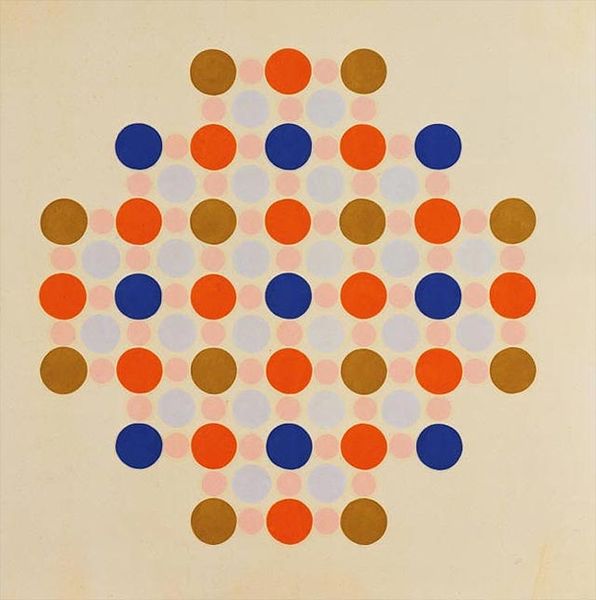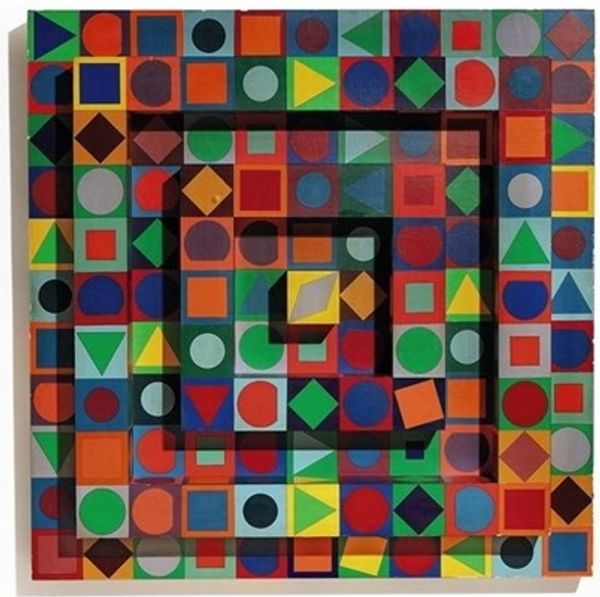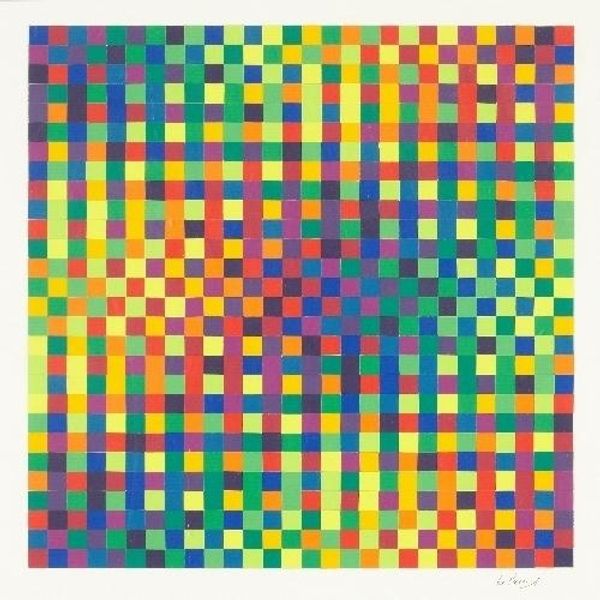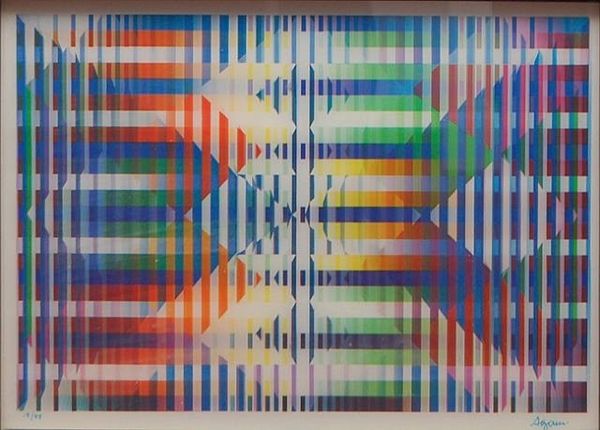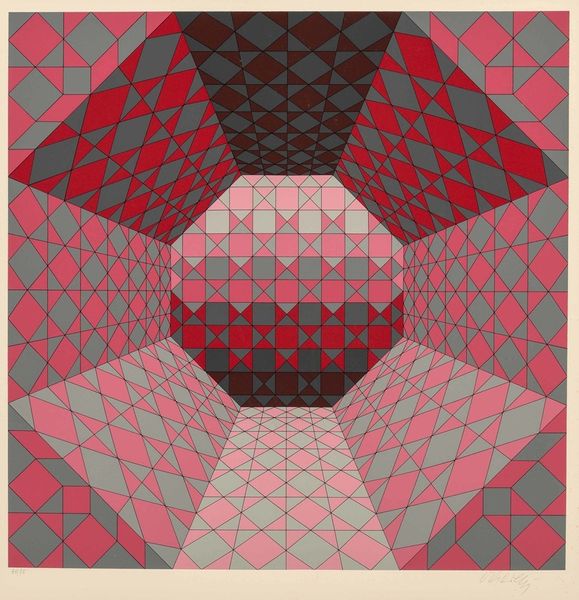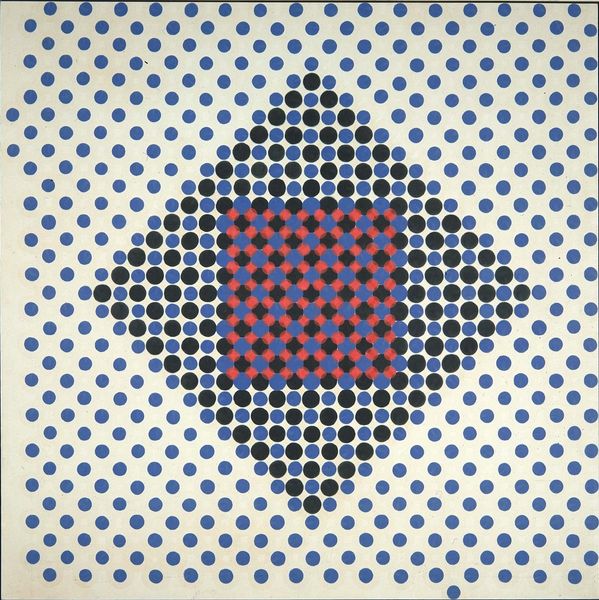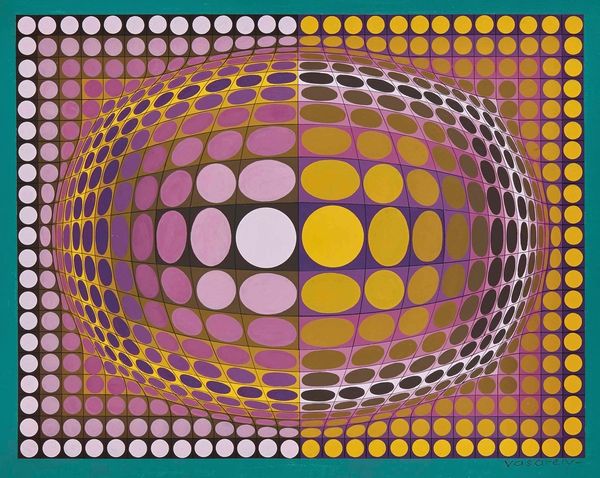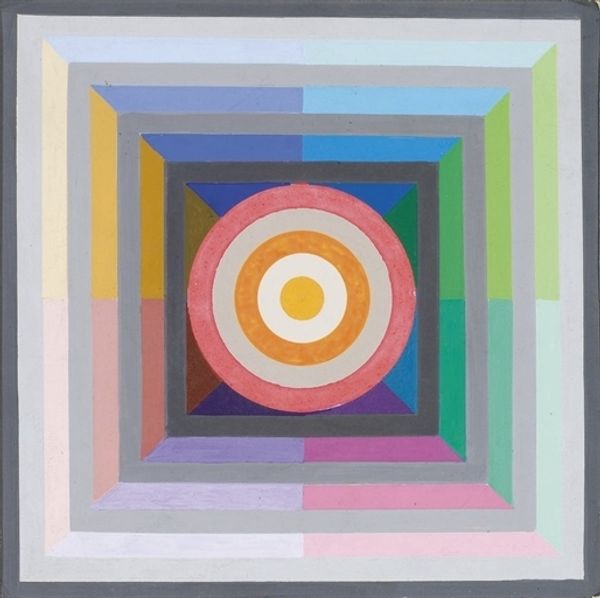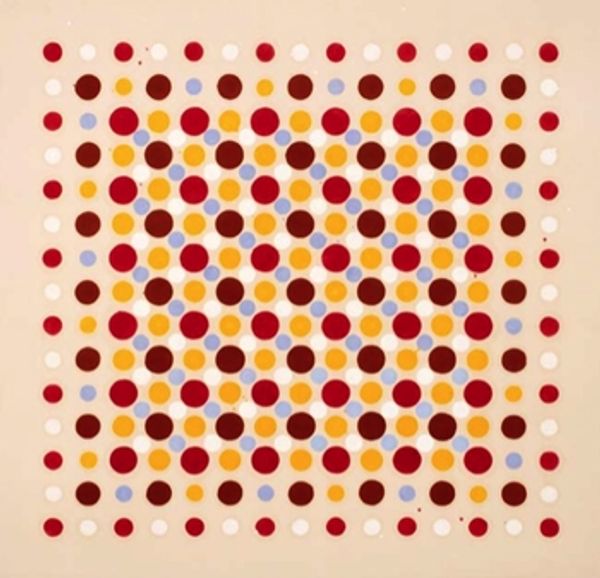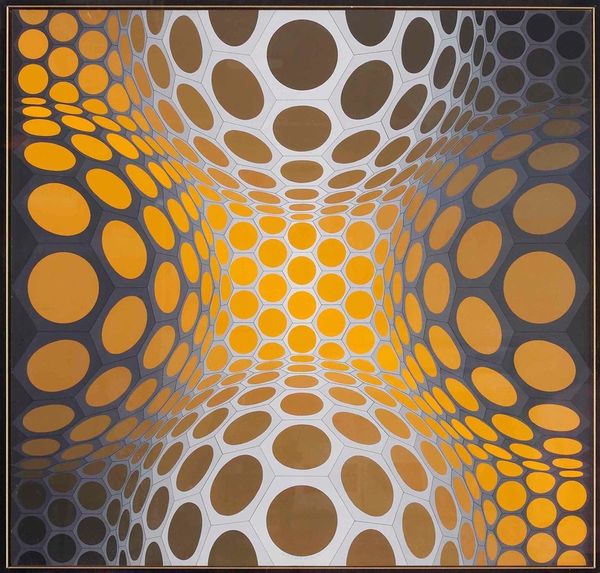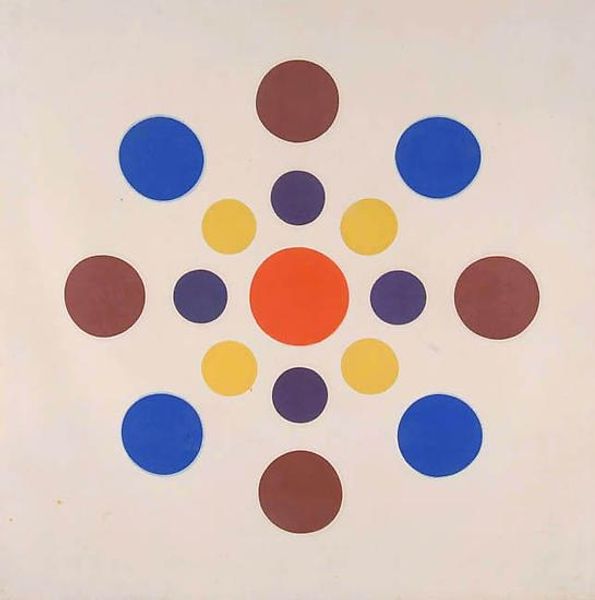
acrylic-paint
#
pattern
#
op art
#
colour-field-painting
#
acrylic-paint
#
geometric pattern
#
geometric
#
geometric-abstraction
#
line
#
hard-edge-painting
Copyright: Thomas Downing,Fair Use
Curator: This work before us, simply titled "Untitled," was crafted in 1962 by Thomas Downing, employing acrylic paint to bring its geometric design to life. Editor: My initial impression is one of structured calm. The precise arrangement of dots creates a visual rhythm that's quite soothing. Curator: Downing was associated with the Washington Color School, and his method involved pouring thinned acrylic paint onto unprimed canvas. There's a certain elegance in how the paint interacts directly with the weave. The evenness of those dots must have demanded considerable labor and consistent hand. Editor: Absolutely. Circles are powerful symbols of wholeness and unity, used across centuries. Arranged in this lattice, however, they seem to gesture towards something less resolved—a kind of fractured mandala, perhaps? What cultural associations might this evoke? Curator: It's interesting that you say that. We see the development of mass-produced acrylic paints during this period afforded artists new options, ones previously only available through specialized industrial manufacturing processes. Perhaps a sense of tension and expansion through accessible materials also mirrors broader social shifts? Editor: The palette also strikes me – these aren't bold, assertive colors. The muted reds, oranges, and lavenders feel rather delicate, like memories fading. Perhaps Downing’s hinting at something fleeting, a commentary on time and perception itself through symbolic language of geometric structure. Curator: Fascinating. From my point of view, though, the interplay between color, pattern, and technique also directs focus onto production itself. This geometric precision could be seen less as symbolic of personal affect but, rather, it serves to showcase a mastery of materials and application, an examination into our relationship with mass production through accessible art. Editor: It’s wonderful how the very same piece of artwork, viewed through different lenses, can stimulate completely distinct interpretations. Curator: Indeed, exploring artistic creation via varied avenues makes each encounter even richer.
Comments
No comments
Be the first to comment and join the conversation on the ultimate creative platform.

